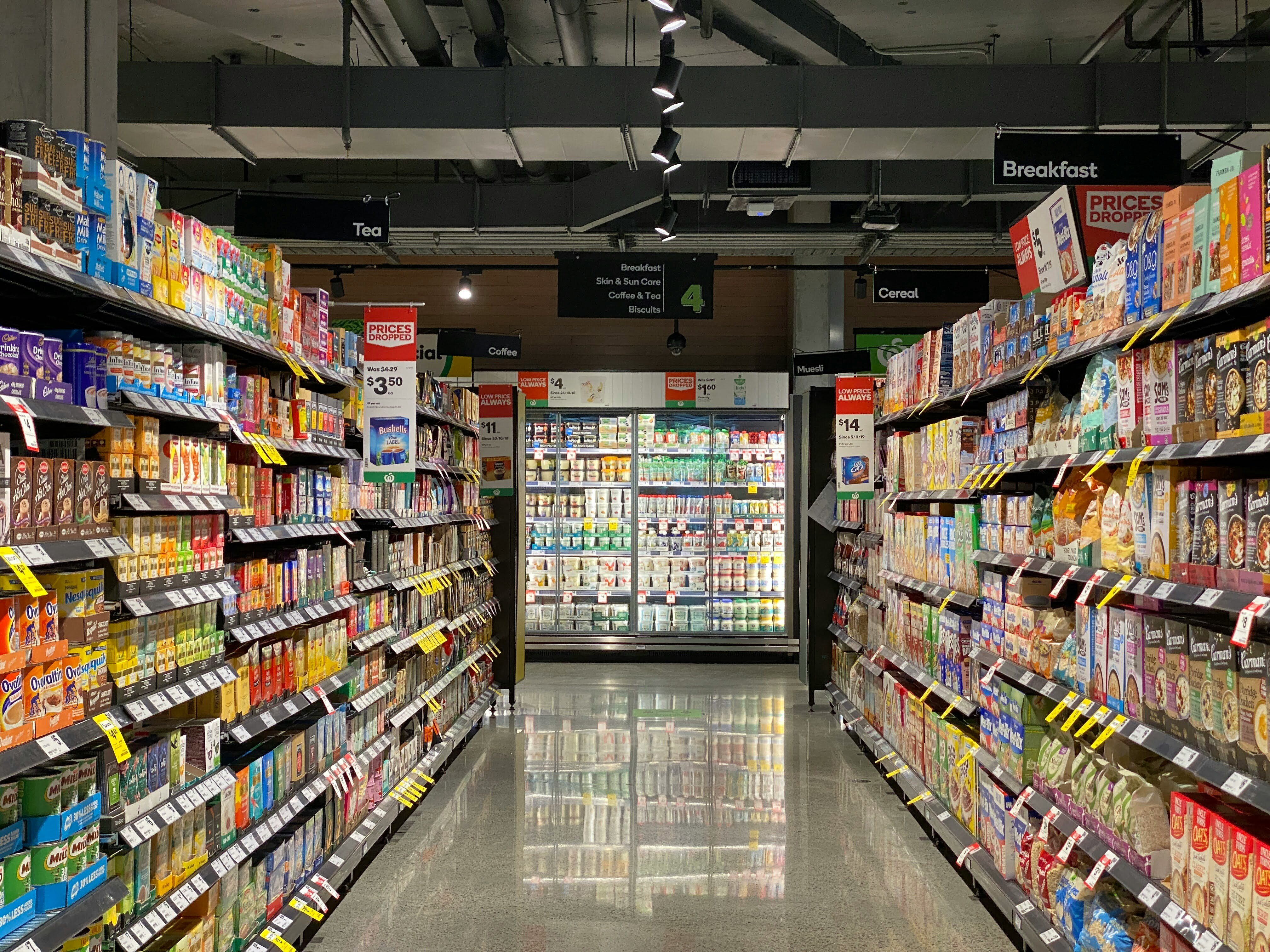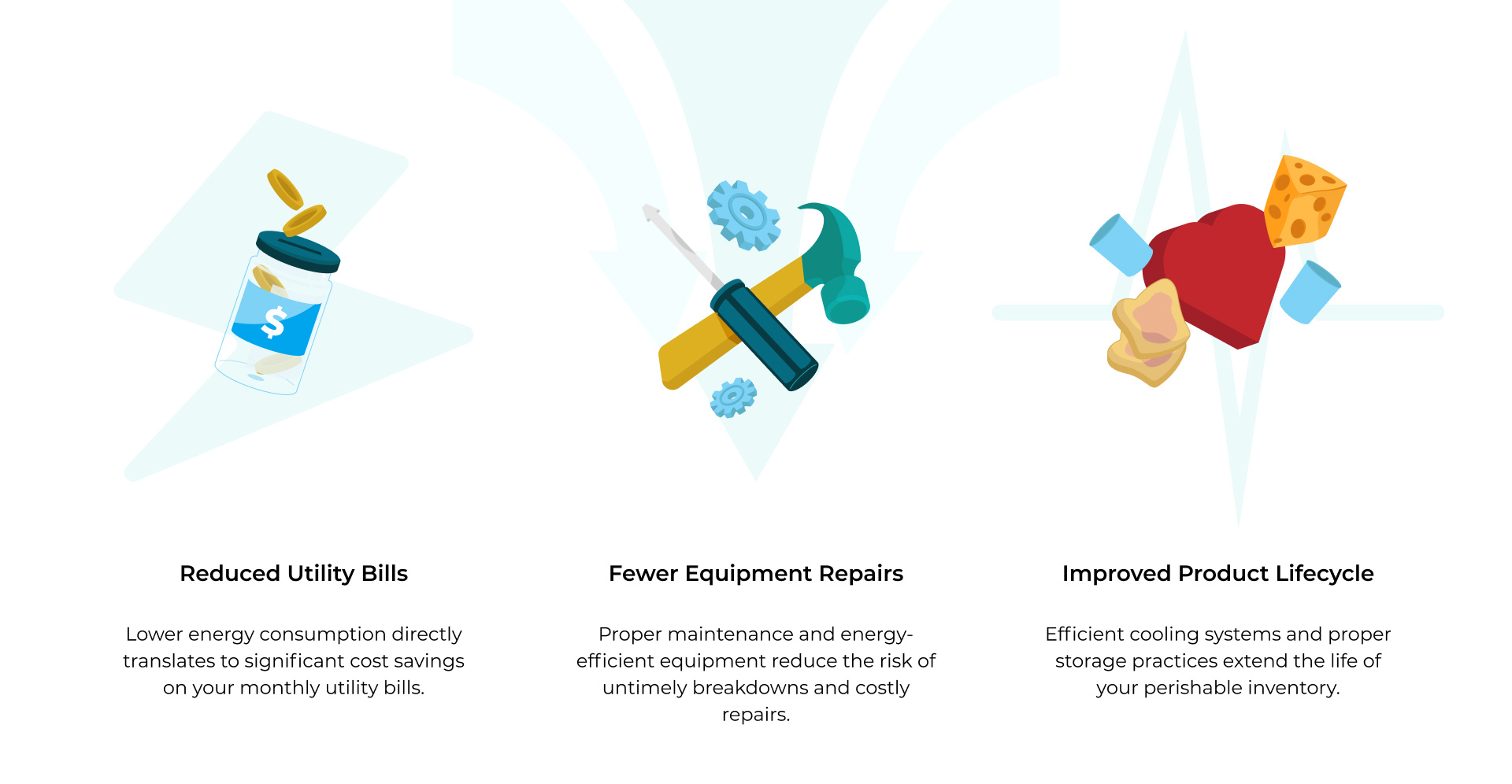5 Hidden Energy Consuming Areas that Stunt Your Convenience Store’s Growth

Convenience stores already face challenges in keeping their finances in check. Therefore, it goes without saying that you’d want to keep unnecessary expenses low to maintain consistent profitability for your store.
Unfortunately, your convenience store could be incurring costs right under your nose. A good chunk of these hidden costs can be attributed to its energy consumption.
Let’s narrow down the list of suspects before we discuss the solutions you can use to address these hidden costs and improve your convenience store’s overall operational efficiency.
What are these sources of hidden energy costs in my convenience store?
1. Inefficient refrigeration units
Refrigeration accounts for about 47%-55% of energy consumption in convenience stores, which is only made much higher due to outdated and inefficient equipment.
Outdated equipment: Older refrigerators and freezers might be less energy-efficient than newer models with features like automatic defrost cycles and improved insulation.
Improper maintenance: Dirty coils, malfunctioning fans, and faulty door seals can all reduce the efficiency of refrigeration units and increase energy use.
Unnecessary lighting: Keeping freezer and cooler lights on all the time can contribute to wasted energy.
2. Inefficient lighting
Most convenience stores are expected to stay up and running 24/7. During that runtime, lights will have to stay on for both customer comfort and employee safety. Lighting accounts for an average of 22% of energy consumption. Still, there have been records of this reaching a staggering 53%.
Outdated and uncontrolled lighting systems will, ironically, only bring your convenience store closer to darkness.
Traditional incandescent bulbs: These bulbs are much less energy-efficient than LED lights.
Excessive lighting levels: Overall store lighting levels might be higher than necessary, especially in areas already sufficiently lit by natural lighting.
Daylight neglect: Not taking advantage of natural light during the day can lead to unnecessary use of artificial lighting.
3. Inefficient HVAC systems
HVAC accounts for about 22% of overall energy usage (Cooling: 5%; Space Heating: 14%; Ventilation: 3%). Improper temperature control, leaky ducts, and dirty air filters all contribute to higher-than-expected energy bills from your HVAC systems.
Improper temperature control: Keeping the store too cool during the summer or warm in the winter will only waste energy and raise your bills.
Leaky ducts and air leaks: Air leaks in ductwork or around doors and windows allow conditioned air to escape, forcing the HVAC system to work harder and use more energy.
Dirty air filters: Clogged air filters restrict airflow and reduce the efficiency of the HVAC system.
4. Idle equipment
There is no shortage of idle equipment in convenience stores, making their energy usage widely unpredictable. Unnecessarily leaving equipment on during off-peak hours and even phantom loads (which live up to their hidden cost nature) are the primary suspects here.
Unnecessary operation: Leaving equipment like coffee brewers, display lights, or register monitors on during off-peak hours can contribute to wasted energy.
Phantom loads: Even electronics turned off can draw small amounts of energy when plugged in (Example: The tiny power light that stays on).
5. Unopened walk-in coolers and freezers
This may not sound like a problem at first. Still, it can disrupt proper air temperature distribution—forcing walk-in coolers to exert extra effort to maintain ideal temperatures for safe storage. The usual causes would be…
Frequent opening and closing: The constant opening and closing of walk-in coolers and freezers allow cold air to escape and warm air to enter, requiring the system to work harder to maintain the desired temperature.
Improper stocking: Overstocked walk-in coolers and freezers can restrict airflow and reduce operational efficiency.
How would these hidden energy costs affect your convenience store’s bottom line?
It takes a lot to keep a convenience store running… and even more to consistently run at a profit. Without the right energy management systems, energy-saving tools, and strategies, everything keeping your convenience store afloat might as well be dead weight that ends up sinking it.
Direct impact on costs
Inefficient appliances, lighting, and HVAC systems lead to increased energy consumption, directly translating to higher utility costs each month. These costs can erode profits and reduce the store's overall financial health.
Additionally, outdated or poorly maintained equipment is more prone to breakdowns. The cost of repairs and potential replacements for malfunctioning refrigerators, freezers, or HVAC systems can significantly strain your convenience store’s budget.
Indirect impact on revenue
Inefficient HVAC systems can lead to uncomfortable store temperatures—driving customers away and potentially impacting sales. Food safety will also be a significant issue, as malfunctioning refrigerators and freezers can compromise safe storage temperatures and lead to food spoilage.
Not only will spoiled products represent lost revenue, but they can also damage your store's reputation.
For the employee, working in an overly warm or cold environment can affect morale and productivity. Such an uncomfortable working environment can lead to high employee turnover, increasing recruitment and training costs.
Long-term impact
Your store could take advantage of much-needed cost-saving opportunities. Many utility companies offer rebates and incentives for businesses that invest in energy-efficient equipment. Finally, your brand image and reputation will suffer as consumers become increasingly environmentally conscious.
What tangible benefits can you expect to see after implementing these solutions?

What solutions can you implement to address these hidden costs?
1. Invest in energy-efficient equipment
- Upgrade to Energy Star-certified refrigerators and freezers with features like automatic defrost cycles and improved insulation. These models can significantly reduce energy consumption while maintaining optimal cooling performance.
- Replace traditional incandescent bulbs with LED lighting throughout the store. LEDs are much more energy-efficient and last longer, leading to significant cost savings.
- Consider upgrading to high-efficiency HVAC systems or implementing smart controls that optimize operation based on occupancy and weather conditions.
2. Prioritize preventative maintenance
- Develop a routine maintenance schedule for refrigerators, freezers, HVAC systems, and other equipment. Cleaning coils, replacing air filters, and addressing minor issues promptly can prevent costly breakdowns and ensure optimal efficiency.
- Consider service contracts with qualified technicians for proactive maintenance and early detection of potential problems.
3. Implement operational changes
- Install timers or motion sensors to ensure lights are only on when necessary, especially in stockrooms and restrooms. Encourage turning off displays or signage during off-peak hours.
- Train staff to minimize opening walk-in coolers and freezers, taking only what they need at once and ensuring proper door seals to maintain optimal temperature control.
- Use power strips with on/off switches to eliminate phantom energy consumption from electronics and appliances left plugged in but not in use.
4. Leverage technology for monitoring and control
- Invest in smart meters to gain real-time insights into energy consumption patterns. Building automation systems allow for centralized control of lighting, HVAC, and other equipment—enabling data-driven optimization.
- Consider software solutions that analyze energy usage data and recommend further efficiency improvements.
5. Focus on measurable results
- Start by conducting a comprehensive energy audit to identify areas with the most significant hidden energy costs. This data will guide investment decisions and provide a baseline for measuring progress.
- You can only optimize what you can measure, so a reliable monitoring system ensures consistent and effective control and optimization of your convenience store’s energy consumption. Ultimately, this helps you tangibly measure the effectiveness of your efforts and quantify the ROI from your energy-saving initiatives.
The right monitoring tools can help you zero in on your store’s hidden costs
Expose your convenience store’s hidden costs with reliable monitoring tools that give you more control over your energy consumption. GlacierGrid’s energy-saving solutions give you the tools and the control you need to optimize your store’s energy consumption and ultimately maximize your store’s profits.
Start cutting your store’s energy costs by booking a free demo with our team.








